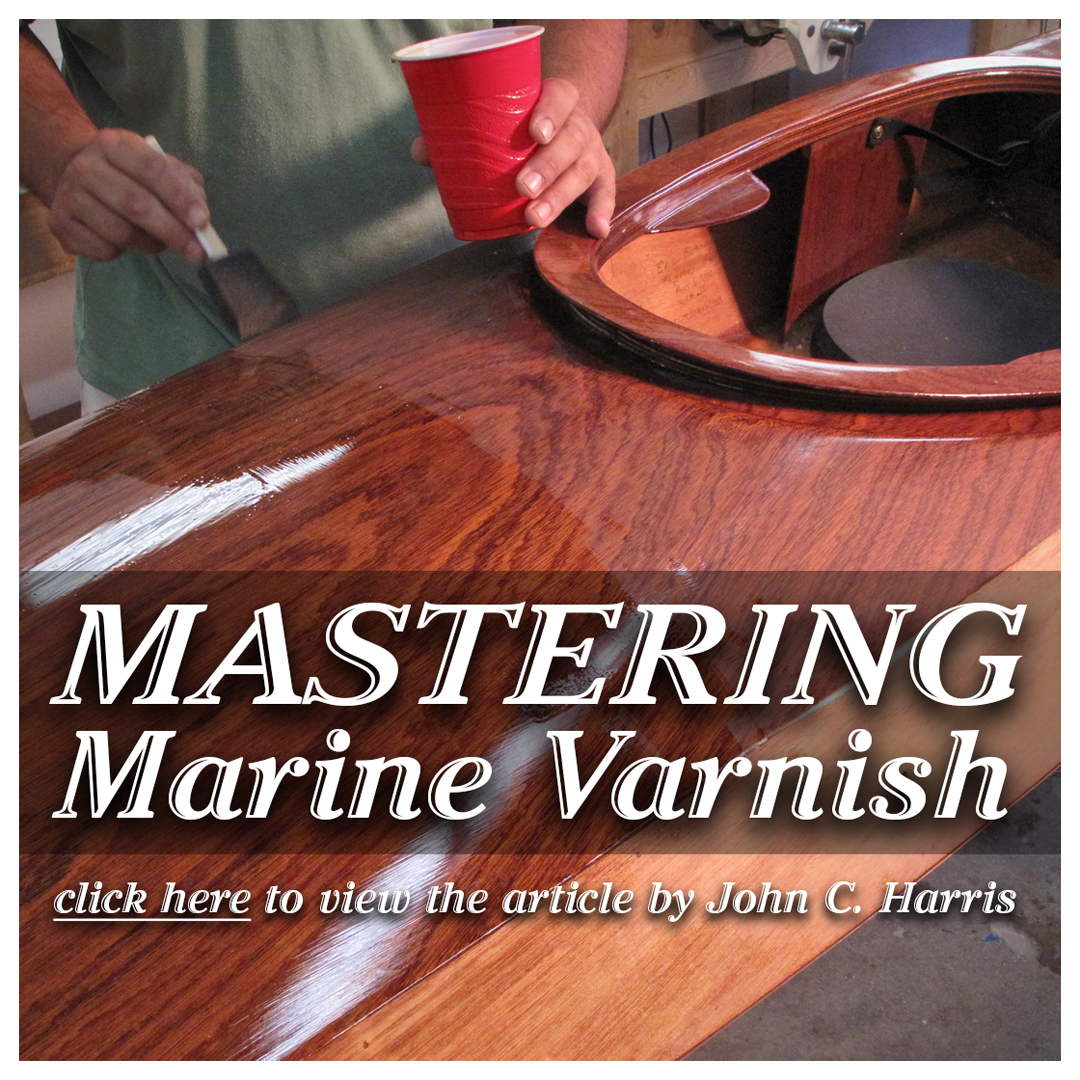Builders' Forum |
|
| ↓ Scroll to Last Comment ↓ | Forum Guidelines | Builders' Forum | |
I'm getting into the gluing on a Skerry now, and I started out mixing the seam epoxy and fillets with West 406 silica which I had left over from a previous project. I read on the Cell-o-fill label in the kit that it was a substitute for the silica w/o the hazardous dust. Getting tired of donning my respirator when mixing a batch, I went ahead and made the last batch with the Cell-o-fill, and it definitely doesn't blow up in the air like the 406 and isn't silica in the first place. It seems to flow or trowel nicely. Is there any reporting on strength or durability difference between the two fillers? The new stuff is definitely easier to work with, but I do still have most of a tub of the West 406 to use up if it's a difference worth bothering with. Just curious...
8 replies:
RE: cell-o-fill vs. silica
Cello-fill or silica may be ok for filets if you're going to paint but they are more expensive than wood flour and will contrast with the finish if you use varnish. Microspheres, as far as I know, are used in epoxy as a fairing compound because the glass spheres make it easy to sand. Seems to me if it's easier to sand it wouldn't be as strong.
RE: cell-o-fill vs. silica
"...... (if you don't mind risking silicosis with the 406)......"
Silica is preseent in a lot of materials. Silicosis is a disease much like lung cancer caused by asbestos. A respriator is a good thing. While you are at it use the respirator when cutting, or mixing concrete, masonry mortar, masonry units, and any kind of stone product. Of course some safety types will have us wearing respriators at the beach.......silica is sand you know. ,
RE: cell-o-fill vs. silica
It all depends on the kind of fillets. If they're meant to go under glass tape, you can use almost anything since the glass provides the tensile strength, not the fillet material. The fillet is there just to support the glass tape and to maintain the minimum bend radius. In that case, a non-brittle material with some compressive strength is best.
If it's an unsupported structural fillet, the material needs to be able to transmit and diffuse the forces present at the joint.
But, while that's the theory, in actual fact the boats we build are so low stress compared to the materials that we build them from, that any of the commercially available fillers will work fine (except for fairing materials). Go with what you find most convenient and comfortable to work with.
Have fun,
Laszlo
RE: cell-o-fill vs. silica
Silicosis (previously miner's phthisis, grinder's asthma, potter's rot and other occupation-related names)[1] is a form of occupational lung disease caused by inhalation of crystalline silica dust, and is marked by inflammation and scarring in the form of nodular lesions in the upper lobes of the lungs. It is a type of pneumoconiosis.
RE: cell-o-fill vs. silica
Oh yes, I keep the respirator handy. I have a history of childhood asthma, and I've made the mistake of sanding epoxy without protection and know the bronchospasm reaction. Coming from some hazardous industrial environments as an engineer (uranium hexafluoride dust anybody???) I appreciate safety gear. Not having to pull on as much gear is nice. That's why I'll be rolling and brushing paint on my boat, not spraying 2 part polyurethane and why the Cell-o-fill is attractive. The best new addition in the garage is a new shop-vac with a HEPA filter and adapter for my sander. Pricey filter, but it works a treat.
The 406 filler is the superfine (colloidal) solid silica particles, not the microspheres. It makes a very hard and hard to sand fillet, not the soft, easy sanding fairing compound that the 410 filler makes. I haven't sanded the fillets with the Cell-o-fil yet, so that'll be interesting.
RE: cell-o-fill vs. silica
Uranium hexafluoride? So you could tell everyone who asks why you're building the boat that it's so you can go fission,













RE: cell-o-fill vs. silica
» Submitted by Dick Dowdell - Sun, 3/8/15 » 10:49 PM
Sawdust,
West 406 is made up of microscopic spheres and Cell-o-fill of tiny cellulose fibers. Both are fine as fillers and have good strength under compression (if you don't mind risking silicosis with the 406). Just a guess, but I would think that an epoxy mixture with the cellulose fibers of Cell-o-fill would be stronger in tension than one with silica spheres. Avoiding toxic materials is another plus for Cell-o-fill.
I haven't read the Skerry manual, but with the CLC kit I built, wood flour was the primary filler recommended fillets and Cell-o-fill for bonding.
Cheers,
Dick